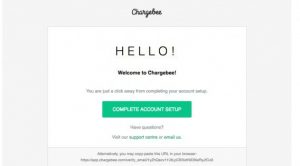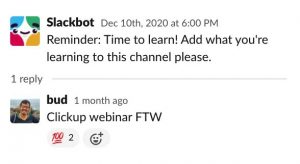Think predictive analytics is out of reach for your organization? Think again. Columnist Nick Iyengar outlines what you’ll need to get started and describes two real-world scenarios to show you how it can be used.

Generating a return on your investment in analytics initiatives can seem like a tall order. First, you’ve got to complete a robust yet resilient implementation of an analytics platform across your sites and apps. Then, because collecting data doesn’t create value for your organization in and of itself, you need to build out some kind of analysis layer so that you can comb through the data, discover opportunities and plan to take advantage of them.
Whether you build a team in-house or opt to work with a partner, good analytical talent is hard to come by, so putting together that capacity for analysis isn’t a trivial project. On top of that, somewhere along the way, you’ll need to put some governance in place so that your organization can have a “common language” for analysis, and orderly processes rather than chaos.
So if you’ve tackled all that, pat yourself on the back — you deserve it! Now, are you ready for the next challenge?
Consider this: Even after putting in all the work to build out an analytics practice which collects clean data, analyzes it in a consistent, structured manner and turns that data into actionable insight… all that analysis is still happening post hoc. In other words, you’re driving along the highway by looking in the rearview mirror.
I suppose that with enough practice, you could probably make that work, but obviously, it’s a bit dangerous. Wouldn’t it be better to drive based on what’s happening next, rather than what’s happened before?
When I talk to clients, I often find that people think of “predictive analytics” as something only the most well-supported analytics groups can take on. But you don’t have to be an Amazon or a Google to start using predictive analytics to your advantage. Let’s take a look at what you’ll need to get started, as well as a couple of broadly applicable, practical use cases for predictive analytics.
What you’ll need
As with any analysis, predictive analysis is a garbage-in, garbage-out deal. So how do you make sure your data isn’t garbage? Aside from taking care of the obvious reliability concerns, there are a couple of (related) things to focus on.
First, you’ll want to have access to a wide variety of signals to feed into a predictive analysis. In a web analytics scenario, that means going far beyond simple pageview tracking and ensuring that as many different signals of user behavior as practicable are recorded.
Depending on your site/app, this might mean measuring scroll behavior, video consumption, download activity, shopping or browsing activity, cart progression and much more. This is critical, because the more signals we can process when doing predictive analytics, the better chance we’ll have of identifying those that have the greatest predictive power.
Second, you’ll want granular data that describes user behavior in much more specific ways than an “out-of-the-box” analytics tool might do. Say you’ve decided to add scroll tracking to your web analytics package. Great! But rather than simply measuring whether a user scrolled to the bottom of a page, consider tracking that activity more granularly. How many people scrolled a quarter of the way down a page? Halfway?
Or consider video consumption. Many organizations record data on whether users played a video. But how many users stuck around to watch at least half of that video? How many finished it?
All of this might sound like overkill. But when you ramp up the variety of signals you can use for predictive applications and improve the granularity of those signals, the predictions you can make are likely to be much more accurate. As the saying goes, look before you leap.
Of course, predictive isn’t just about what kinds of data you have at your fingertips; it’s also about the skills necessary to put that data to use.
The good news is that if you have analysts who are fluent in regression analysis, you can get started with some forms of predictive analysis. If you have the ability to put machine learning to use, your options will grow even more numerous.
Two sample use cases
To show how predictive analysis can be used in some real-world scenarios, consider the following. Let’s say you’re about to publish a raft of new content; perhaps a new campaign is starting, you’re launching a new product, or you’re expanding into a new market. Wouldn’t you like to know how that content is likely to perform — and how you can improve that performance — even before you go live?
Well, if you’ve got rich, granular data in your web analytics platform, you can do just that. Take a look at how your content has performed recently, segmenting content by the template each piece of content uses. (This analysis assumes you’re using page templates rather than custom-building all your pages.)
Using multivariate regression, you can analyze each of your site’s page templates to build an understanding of how your visitors respond to them. How does CTR vary based on the placement of your call to action? How does the length of a page influence bounce rate for new visitors on mobile devices?
With the answers to these questions, you can now evaluate the template choices you’ve made (or are trying to make) for your new content. Whether your goal is to maximize CTR on that call to action, or to minimize the bounce rate for all those new visitors who will be coming in on their smartphones, now you’ll know which levers to pull — ahead of time — to improve the performance of that content.
Getting a bit more advanced, what if you could calculate a predicted conversion rate for all of your site visitors based on their on-site behavior? The applications for this would be really powerful. For example, you could streamline your campaign targeting to avoid spending money on people who will never convert — or who are almost certain to convert anyway!
Alternatively, you could test out more aggressive upsells and cross-sells for people you think are most likely to buy. This will yield a diverse and granular set of data on your users’ behavior. Using a machine learning algorithm, you can segment your visitors based on their likelihood to convert, and then take action to “activate” those segments.
Hopefully, I’ve shown you that predictive analytics is more accessible and practical than you might have heard. With a rich data set from web analytics and some skills with regression and machine learning, soon you’ll be driving by looking at what’s ahead of you, not at what’s behind.
Some opinions expressed in this article may be those of a guest author and not necessarily Marketing Land. Staff authors are listed here.
Marketing Land – Internet Marketing News, Strategies & Tips
(31)
Report Post





